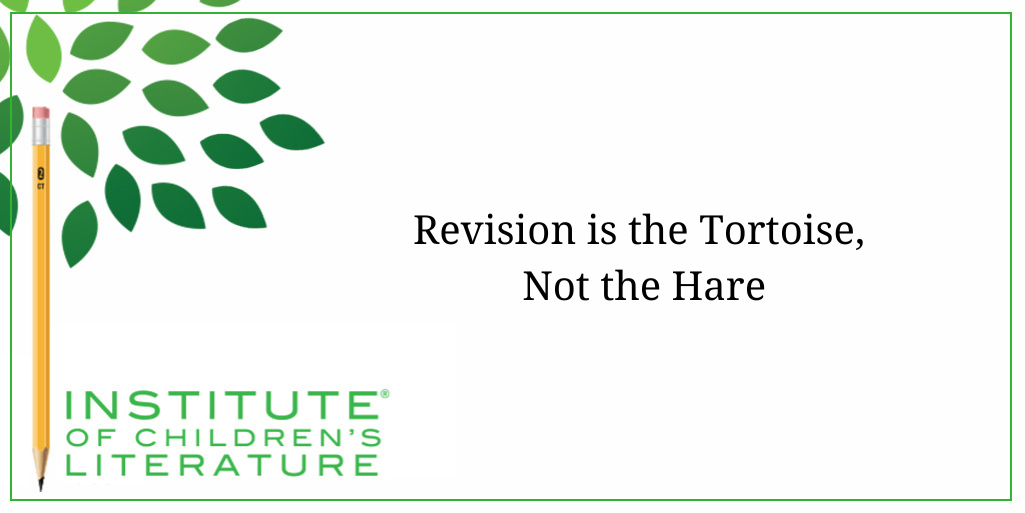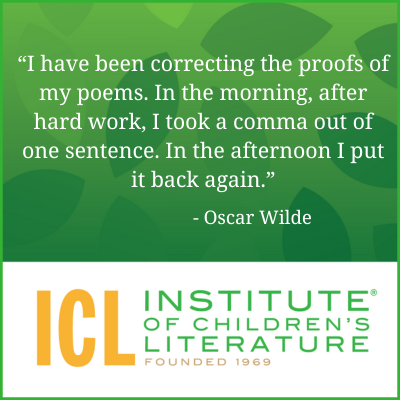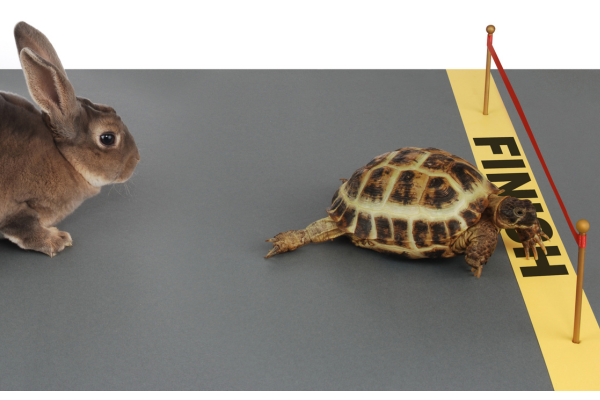
5 Ways Writers Can Prep for 2025 Goal Setting
Before we roll on to the new writing year, let’s harness our optimism for the blank slate before us and prepare for our 2025 Goal Setting just for writers.

Personally I struggle with two things when it comes to unpleasant tasks. The first is procrastination. Honestly my house is never cleaner than when I’m trying to avoid a writing task that I do not enjoy. I can find a million important things to do instead of the writing task. If I manage to overcome the procrastination, the second problem kicks in. If I’m doing something I don’t enjoy, I tend to do it as quickly as I can. But unfortunately fast frequently doesn’t mean good.

In the race between the tortoise and the hare, the hare was quick off the start. He didn’t take time to ponder the course. He didn’t take time to prepare. He simply threw himself in and got running. He thought that would be the best answer, but it wasn’t. And it’s not the best answer for revisions either.

But that is part of a plan that I make ahead of beginning revisions. I make a specific plan for each piece I’m revising. It will include things I always do, like my overused words/action list. And it will include tasks that are specific to this piece, such as checking that my character names are always spelled the same and that I don’t call my character by one last name at the beginning and another in the middle. I create a list of these kinds of problems to search for that will be specific to this piece. It will include names of towns, businesses, pets, all sorts of things that I introduce and need to be consistent with. Making this plan also helps with another important part of revision: allowing some cool-down between writing a piece and revising it. I find I catch more issues (especially voice and clunky writing issues) when I’ve gotten some distance from the piece. I like to allow at least a week of cool down before I jump into revision, though that isn’t always possible with my schedule. Still, I always make sure to leave at least a day in between drafting and revision.
By starting my revision steps with those things that are part of every revision (like culling over overused words), I’m actually adding some more cool down time and emotional distance, since this is more of a mechanical process. It helps me see the revision as a process to work through rather than a painful hacking at a piece of writing I’m in love with.
In Aesop’s Fable, the hare grew weary in his race. He was bored. He wasn’t enjoying himself. And he had a little too much faith in his own skills. We can run into those kinds of feelings in the revision process. Revision can be a little dull. And we struggle if we really did like that story the way it was. We can begin to read over problems instead of seeing them and facing them. Like the hare, we snooze in the middle.

By breaking the book into pieces and doing only one small piece a day, I can approach each of the pieces as its own whole and the task becomes something I can accomplish without growing bored, because I’m not trying to force myself to stay at it for too long. That means I don’t read over nearly as many mistakes.
Now because I’m revising in these small pieces, I write myself a lot of notes. These mostly take the form of either reminders or questions. A reminder might say something like: “Chapter 4, page 48, Bess mentions seeing bees buzzing around the back door, trying to get in.” I’ll write a note like this whenever I want to be sure I eventually do something with an idea I had during the creation process. Sometimes these tiny ideas sounded interesting when I wrote them, but I never followed up. And that’s a problem. They must prove to be important in some way, even a small way, or I need to remove them.
For questions, I may have something like “Where did Joey get the pen in Chapter 8, page 99?” or “In Chapter 2, page 23, Felix sees Mandy has red eyes. Do I ever explain why?” Sometimes I think I know the answer, but I recognize that this moment will be a problem if I didn’t follow up, so the questions remind me to check and see to it I’m not leaving loose plot strings at the end of the book.
At the beginning of each day’s revision, I read all the notes and questions that came in the days before. This arms me with things I might add or fix in the coming work of the day. As I discover the answers to the questions, I’ll note them on my question sheet. If I add in a call-back or answer a question, I’ll note that as well. With that, I’ll be able to keep my revision connected even when I’ve cut it into manageable bits of daily work.
Although many writers enjoy doing their writing by the seat of their pants, revision works best when it’s less free-form and more of a procedure. This avoids impulsive changes that introduce new problems that you may not catch.

When you accept that revision takes time and that having a plan will result in the best end result, you’ll end up with a manuscript that best reflects the story you want to tell and makes the best impression on the publisher or agent who will see it next, and the best impression on the reader who will eventually enjoy it as well. Keep that end goal in mind, and you’ll be less likely to fall asleep in the middle of the race and fail to have the victory you desire.
Embrace the way of the tortoise. You’ll be glad you did.
With over 100 books in publication, Jan Fields writes both chapter books for children and mystery novels for adults. She’s also known for a variety of experiences teaching writing, from one session SCBWI events to lengthier Highlights Foundation workshops to these blog posts for the Institute of Children’s Literature. As a former ICL instructor, Jan enjoys equipping writers for success in whatever way she can.

Before we roll on to the new writing year, let’s harness our optimism for the blank slate before us and prepare for our 2025 Goal Setting just for writers.

Writers can be thin-skinned when it comes to getting feedback on their work. Let’s look at 4 ways to positively deal with constructive criticism!

Rejection is part of the territory when it comes to being a writer. Today we offer reflection for writers to help redirect your efforts after a rejection.
1000 N. West Street #1200, Wilmington, DE 19801
© 2024 Direct Learning Systems, Inc. All rights reserved.
1000 N. West Street #1200, Wilmington, DE 19801
© 2024 Direct Learning Systems, Inc. All rights reserved.
1000 N. West Street #1200, Wilmington, DE 19801
© 2024 Direct Learning Systems, Inc. All rights reserved.
1000 N. West Street #1200, Wilmington, DE 19801
© 2024 Direct Learning Systems, Inc. All rights reserved.

1000 N. West Street #1200, Wilmington, DE 19801
© 2025 Direct Learning Systems, Inc. All rights reserved.

1000 N. West Street #1200, Wilmington, DE 19801
©2025 Direct Learning Systems, Inc. All rights reserved. Privacy Policy.
2 Comments